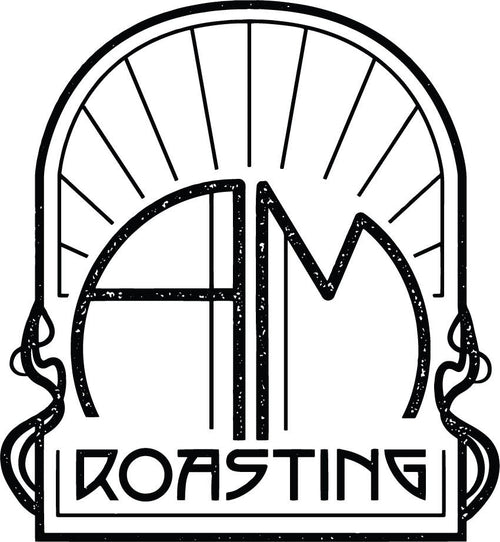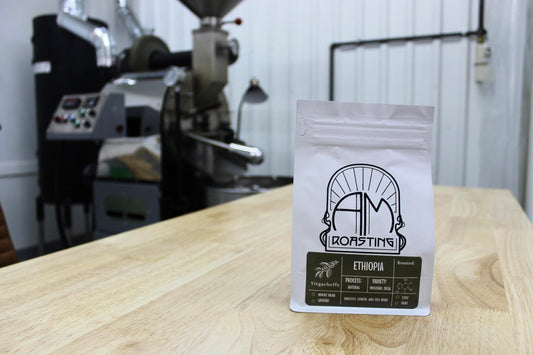Natural, washed, honey, wet hulled…what do these words indicate and how do they affect your coffee? This is a question many people ask themselves as they peruse the shelves of their favorite coffee shop, coffee roastery, or grocery wholesaler.
Although transparency efforts have always been paramount in the realm of specialty coffee, the practice has continued to progress in recent years. Roasting companies include an array of information on coffee bags, information that informs the buyer of a coffee’s sourcing and processing history. These statistics often include the region and altitude at which the coffee was grown, the coffee plant variety, and the utilized processing method.
A processing method refers to how a coffee bean is handled between the time it is picked from the tree to the time it may be roasted. Each processing method imprints a unique flavor profile onto a coffee, affecting the final roasted product.

Natural Process
In natural processing, coffee cherries are picked from the tree and laid out on large beds to dry. Because the whole cherry is left intact while drying in the sun, sugars interact with the coffee seed, resulting in a deep, sweet flavor with distinguishable red fruit notes. After the simultaneous drying and fermenting process is complete (usually within a few weeks), the skin and pulp are mechanically removed from the coffee using a depulping machine, leaving the seed ready for roasting.
Washed Process
Washed coffees result in clean, crisp flavor notes. After picking, coffee cherries are deposited into a depulper that separates the seed from the rest of the cherry. The seeds are subsequently immersed in water, removing any remaining mucilage from the seed. The seeds are then dried and packaged for roasters to purchase. Washed coffees generally undergo less fermentation than other processing methods, resulting in lighter bodied coffees that reflect fresh fruit and clean acidity.
Honey Process
In a harmonious coalescence of natural and washed processing methods, honey processed coffees result in a clean yet complex cup. Honey processing begins with the mechanical removal of the seed from the coffee cherry. Instead of cleansing the mucilage from the seed as characteristic of the washed method, the seed and mucilage are then dried on large beds. While the coffee is drying, the mucilage layer infuses the seed with sweetness. Once dried, some remaining mucilage may be removed from the seed, and the coffee is ready to be packaged and sold. Honey processed coffees maintain the crispness of a washed coffee while adding a layer of additional sweetness.
Wet Hulled
Wet hulled processing is defined by its efficiency and is most commonly found in Indonesia. This process results in earthy, herbaceous, and heavy bodied coffees. The coffee cherry is initially picked and depulped. Seeds and remaining mucilage are then placed in large tanks to ferment for about a day, then removed and washed. Before the seeds have dried completely, the coffee is then transported to a mill where it is hulled to remove the parchment layer. Because of the remaining moisture, removing the parchment is difficult, leading to rough handling of the beans during hulling. Another short drying phase takes place before the coffee is packaged and prepared for export. Removal of the parchment layer before drying expedites the drying process, which is essential in Indonesian countries, such as Sumatra and Sulawesi, where humidity levels impede drying capabilities.
Anaerobic Coffee
Anaerobic processing can be applied to a natural, washed, or honey coffee. It is an additional fermentation stage in which the coffee cherry is placed in a large tank and deprived of oxygen. This pressurization results in richly fragrant, sweet, and unique characteristics. After fermentation, coffees are either dried in the cherry to produce a natural, washed and dried to produce a washed coffee, or dried in the mucilage to produce a honey coffee. Although anaerobics are relatively new to the specialty coffee realm, they have quickly gained popularity due to the exotic notes by which they have come to be recognized.
Listing the processing method on a coffee label helps consumers (like you!) understand what characteristics their coffee may have. When you purchase a natural or a wet hulled coffee, you can assume that processing method has left its mark on your coffee. Although many other factors influence the end product, such as roasting technique and regional growing conditions, understanding processing methods can help us understand why certain coffees adapt certain characteristic flavor notes.



